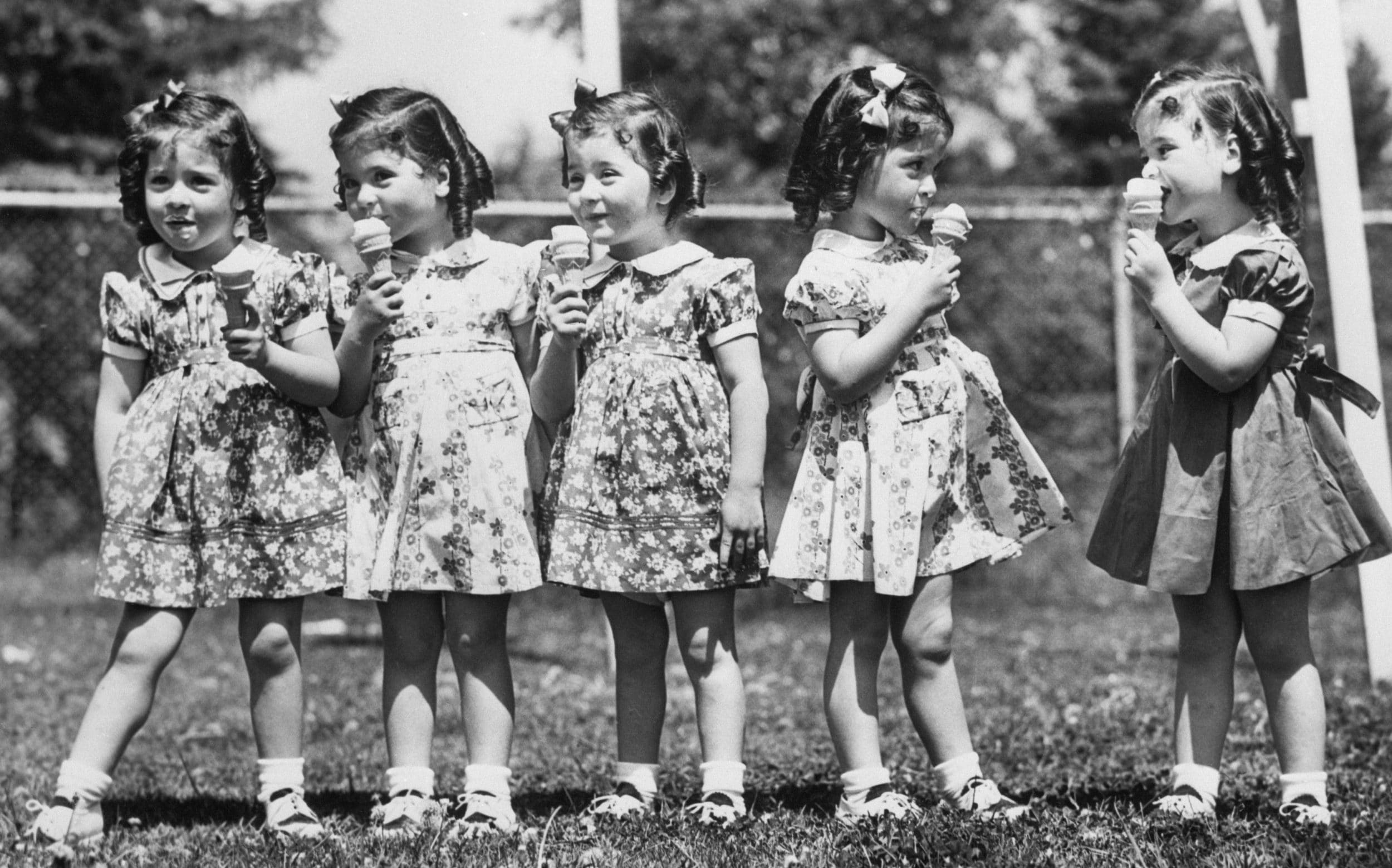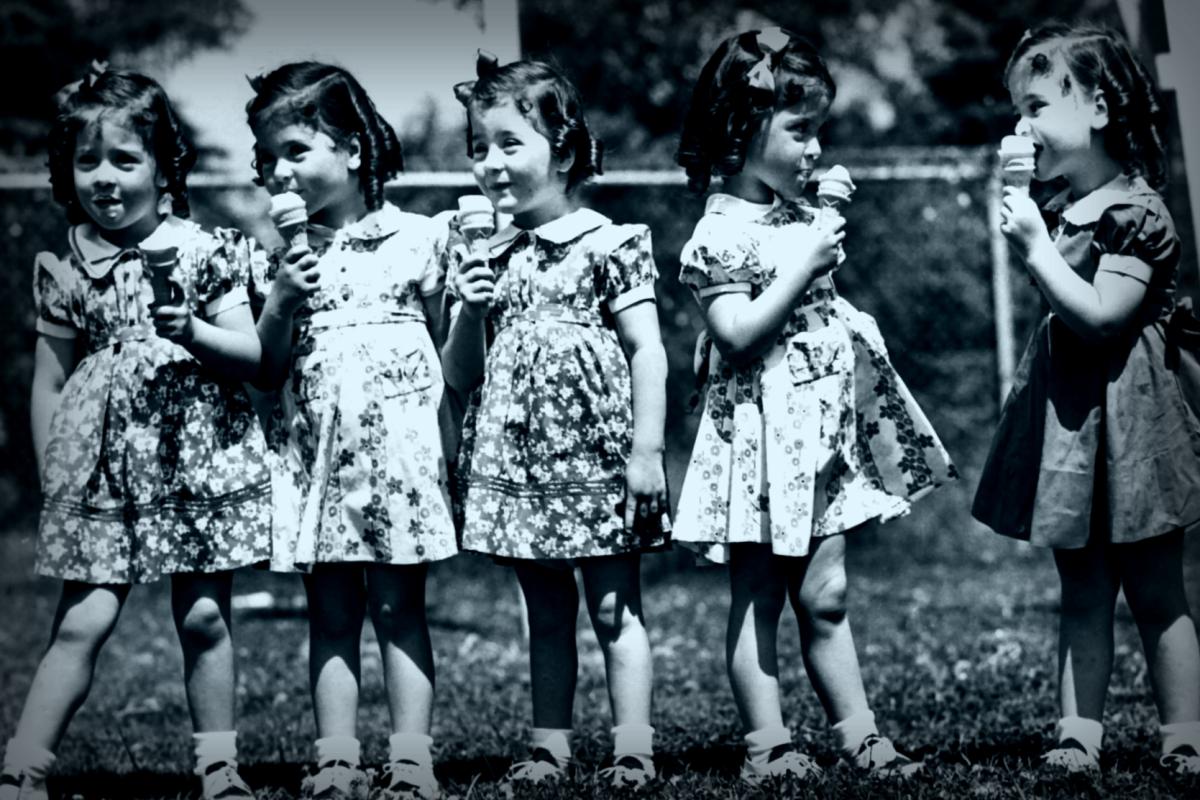
Cécile Dionne, who recently passed away at 91, was one of the famous quintuplets raised in a government-run theme park known as Quintland. This attraction became Canada’s biggest draw in the ’30s, even surpassing Niagara Falls, with visitors eagerly watching the girls play behind a gauzy screen.
Born on May 28, 1934, to Elzire and Oliva Dionne in a small log cabin in Corbeil, Cécile and her four identical sisters were a rare phenomena—the first known quintuplets to survive birth, weighing a total of 13 pounds and 6 ounces. Given the extreme odds of five babies maturing from one egg, their birth provided a much-needed source of joy during the Great Depression.
The Dionne family belonged to a struggling, French-speaking Catholic community. Dr. Allan Dafoe, who didn’t speak French, took control of their care and regulated the family’s contact with the babies toughly: the parents were practically forbidden from touching their own children to minimize the risk of infections.
![[Original caption] Honoured guest Dr. Allan R. Dafoe puts his arms around all five of the Dionne quintuplets Marie, Emelie, Cecile, Annette and Yvonne as they celebrate their first birthday in style](https://img-s-msn-com.akamaized.net/tenant/amp/entityid/AA1Li9Bf.img)
As it turned out, the father had consented to an exhibit at the Chicago World’s Fair to showcase the quintuplets, which led the Ontario government to intervene, declaring the Dionnes unfit to raise them. From then on, the state commercialized the quintuplets more than the family ever could. As Cécile later reflected, “We were just morsels to sell.”
For nearly ten years, Cécile and her sisters were cared for by Dr. Dafoe in a specialized hospital-nursery. Nurses, under strict orders, were instructed not to hug the girls but also to avoid any physical punishment. Around 3 million curious tourists flocked to view the quintuplets at play—an eye-opening experience when, at around five or six years old, they realized they’d been constantly scrutinized.
The Daily Telegraph chronicled their nursery a lot, covering events like transitioning to solid food and even broadcasting their joyful squeals during their first birthday celebration to an estimated audience of 15 million.
By 1936, dolls styled after the “Quints” outsold even Shirley Temple dolls. Not only did the girls star in films, but they also graced the legendary covers of Life, Look, and Time magazines and promoted various products like toothpaste and corn syrup. A bustling community then formed nearby, likened to a mix of Coney Island and a World’s Fair.

During this period, the girls only set foot outside their compound twice—once at age five to meet the King and Queen in Toronto, and another time singing at war fund events. Cécile voiced a lingering confusion over the adults’ obliviousness to their exhaustion and distress: “How come they didn’t see how tired we were and how unhappy we were?”
As they turned nine, public interest began to wane, and citizens grew skeptical as the government’s spending around the quints came to light. Eventually, they returned to their relatives, and seven siblings moved back with the bunch into a home built from the family’s commercial success.
This return was less than ideal. Cécile recalled the resentment from her household, viewing them as “servants” rather than sisters. Following their father’s death in 1979, dark accusations of abuse surfaced. When they approached their local priest for help, his reaction was simply to suggest dressing more warmly when they were in the car.

Cécile eventually realized her childhood dreams of becoming a nurse and having a family. In 1957, she got married to Philippe Langlois, a television cameraman she met over coffee, and together they welcomed five children into the world.
However, life was often tumultuous for her. By the 1990s, Cécile found herself divorced and living in a humble apartment with a couple of her surviving sisters, relying on a librarian’s pension.
A determined advocate, Cécile spearheaded a campaign for financial redress from the Ontario government for funds mishandled in their name. Unfortunately, her situation took another hit when one of her sons moved her into an assisted living facility and then disappeared with her finances, leaving her destitute and back under state care.
An anonymous donor even helped Cécile by selling a cherished 1937 painting of the quintuplets, painted by the renowned Gil Elvgren, who gained fame later for his pin-up art.
Now, Cécile Dionne is remembered, survived only by Annette, her last surviving sister from the set of famous quintuplets.
Cécile Dionne: Born May 28, 1934, Passed July 28, 2025




















